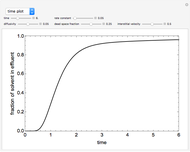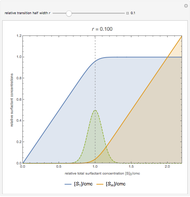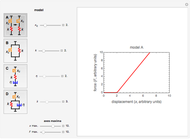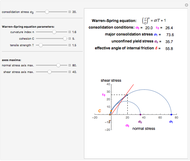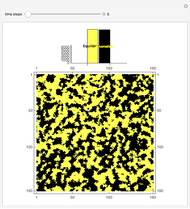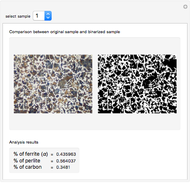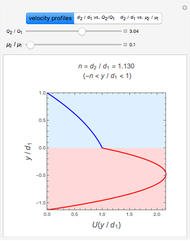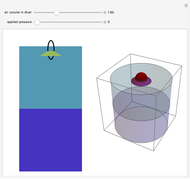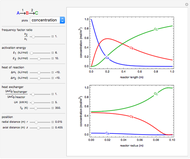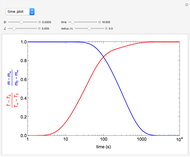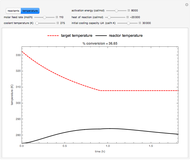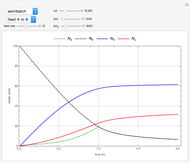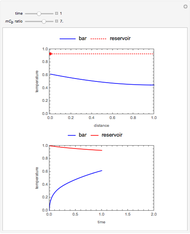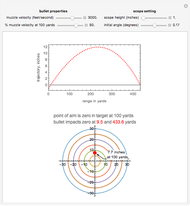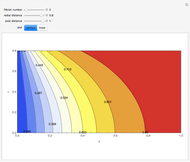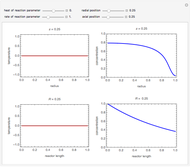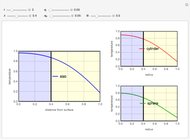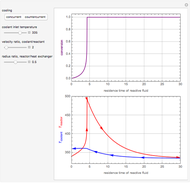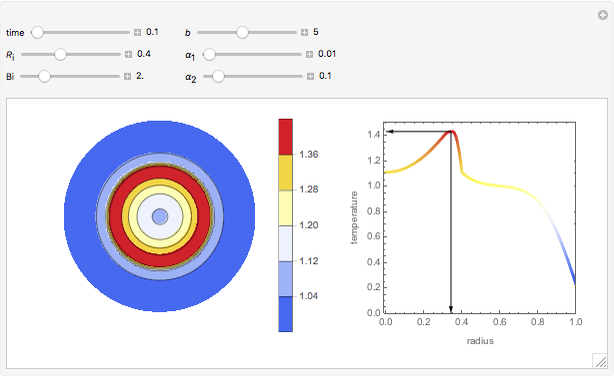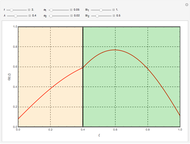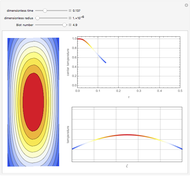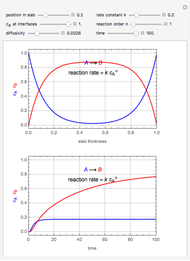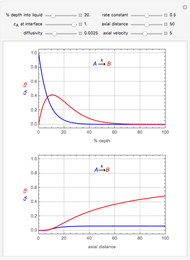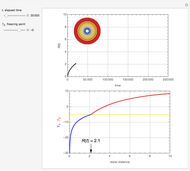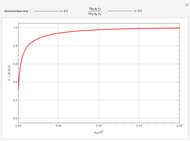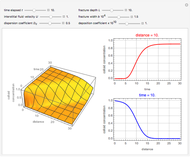Two-Phase Fluid Flow in Porous Media

Requires a Wolfram Notebook System
Interact on desktop, mobile and cloud with the free Wolfram Player or other Wolfram Language products.
This Demonstration shows the solution of the equations of motion for one-dimensional immiscible displacement of oil by water in a porous medium.
Contributed by: Clay Gruesbeck (May 2012)
Open content licensed under CC BY-NC-SA
Snapshots
Details
Consider a displacement process in which water displaces oil in a porous medium. If capillary forces are neglected, the saturation process is represented by a nonlinear hyperbolic partial differential equation known as the Buckley-Leverett equation [1]
 ,
,
where  is the water saturation,
is the water saturation,  is the fluid velocity,
is the fluid velocity,  and
and  are the space and time coordinates, and
are the space and time coordinates, and  is the fractional flow expressed as a function of water saturation,
is the fractional flow expressed as a function of water saturation,  the overall mobility,
the overall mobility, , while
, while  and
and  are the ratios of the relative permeability to viscosity of water and of oil, respectively.
are the ratios of the relative permeability to viscosity of water and of oil, respectively.
In the Buckley–Leverett solution we follow a fluid front of constant saturation, so we can write an expression for the saturation change  . Substituting into the Buckley–Leverett equation, we get
. Substituting into the Buckley–Leverett equation, we get  ; integrating in time yields an expression for the position of the water front
; integrating in time yields an expression for the position of the water front  .
.
In 1952 Welge [2] published an approach using the Buckley–Leverett frontal advance calculation. The method [3] consists in drawing a tangent to the  curve originating at the irreducible water saturation; the point of tangency defines the water saturation at the flood front and the reciprocal of the slope is the front velocity. This Demonstration solves the Buckley–Leverett equation using the Welge method and shows that the velocity and the efficiency of the water flood depend significantly on the mobility ratio of the displacing fluid to the displaced fluid; the lower this ratio, the lower the front velocity and the more efficient the displacement.
curve originating at the irreducible water saturation; the point of tangency defines the water saturation at the flood front and the reciprocal of the slope is the front velocity. This Demonstration solves the Buckley–Leverett equation using the Welge method and shows that the velocity and the efficiency of the water flood depend significantly on the mobility ratio of the displacing fluid to the displaced fluid; the lower this ratio, the lower the front velocity and the more efficient the displacement.
References
[1] S. E. Buckley and M. C. Leverett, "Mechanism of Fluid Displacement in Sands," AIME Transactions, 146, 1942 pp. 107–116.
[2] H. J. Welge, "A Simplified Method for Computing Oil Recovery by Gas or Water Drive," AIME Transactions, 195, 1952 pp. 99–108.
[3] J. R. Franchi, Principles of Applied Reservoir Simulation, Amsterdam: Elsevier, 2006.
Permanent Citation







